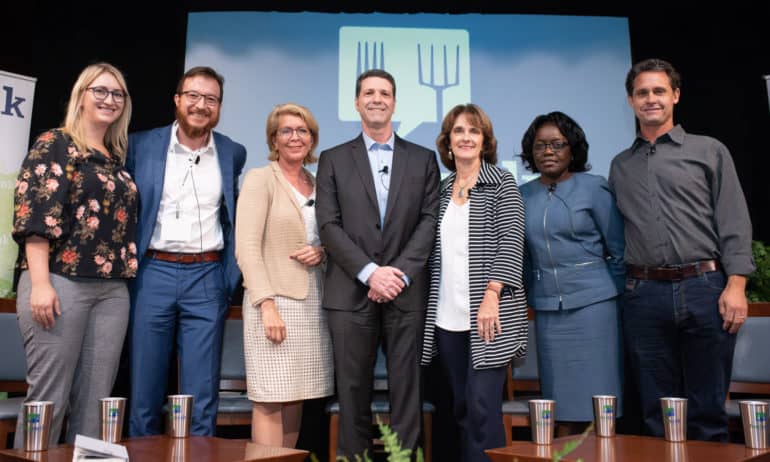“Most losses come from post-harvest to retail,” says Jane Ambuko, Senior Lecturer and Head of Horticulture at the University of Nairobi.
The second panel of the 2018 NYC Food Tank Summit kicks off with Caity Moseman Wadler, Executive Director of Heritage Radio Network, defining on-farm food loss as “edible food that is not being harvested or food that is lost during storage and transport.” The panelists dive into challenges in transport and logistics, as well as the need for biodiversity and a fundamental shift in our food production methods.
“Cold storage is way out of reach for the smallholder farmer. Without storage, a lot is wasted,” Ambuko says. Rafael Flor, Director of Yieldwise at The Rockefeller Foundation, agrees, “Getting the logistics piece figured out drastically reduces food waste … We have seen that reducing food loss in transportation and storage gave an extra 30-percent revenue to smallholder farms.”
Pest and disease are contributors to on-farm food loss, as well, says Marie Haga, Executive Director of the Global Crop Diversity Trust: “We have lost up to 80 percent of natural variety in our crops. We’ve lost varieties that can withstand pests and weather shifts.”
But the responsibility for on-farm food loss doesn’t fall on one player. “Solutions are going to rely on the connections of the entire chain,” says Tobias Grasso, North American President of Food Care at Sealed Air. “Transporters, logistics operations, processors, are all involved. It’s not one farmer’s responsibility—we need systems in place.”
And market standards, as well as consumer preference, need to be changed, says Elizabeth Mitcham, Director of the Horticulture Innovation Lab and Post Harvest Specialist at the University of California, Davis. “The grade standards play an important role in having a well-functioning market produce system, but some of the standards for many crops are based on appearance and size, which have little to do with the nutrition or quality of the food.”
The panel concludes by addressing the need for a fundamental shift in the way food is grown.
“The desire for cheap food has contributed to a monoculture that is detrimental to our environment, and has led to a loss of nutrition in these crops,” Haga says. “Twelve crops contribute to 75 percent of crop growth, and four crops contribute to 60 percent of calories consumed. Diversification of the food system will contribute to better health, for us and the environment, and decent income to farmers.”
“We need new generations to help create solutions to issues we’ve created in the past. We need more than economic return,” says Flor. “We need to care about nutrition, environment, biodiversity. It will require a different food system altogether.”
Watch the full NYC Summit panel on On-Farm Food Waste, above.











